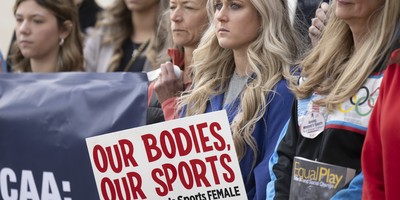In 1955, Walt Disney opened his first amusement park in Anaheim, California. Disneyland has become the most successful amusement park in the world, with an estimated 600 million visitors since it first opened its gates 55 years ago. One of the most popular parts of the park is Fantasyland. Children and adults alike are dazzled by whimsical rides stretching the imagination, envisioning a blissfully perfect world.
Perhaps that’s why fantasy is such an entertaining venture. For just a few moments, we can set aside the troubles and trials of everyday life and visualize things that defy logic or mask the harsh realities of the real world. Unfortunately, California is trying to set up its own Fantasyland outside Disneyland’s walls, passing fantasy-inspired budgets that defy the laws of finance by spending much more than the state can possibly take in. And the Golden State is about to discover that trying to create a fantasy in the real world has devastating consequences.
A recent Los Angeles Times headline says it all: “Californians want it both ways on budget.” A poll conducted by the newspaper found that voters adamantly oppose tax increases to cover the state’s massive $25.4 billion deficit. Instead, they favor cuts to the budget—but not any of the cuts necessary to actually achieve a balanced budget. In fact, voters oppose cuts, and prefer even more spending, on government programs that make up 85% of the state's general budget.
Californians aren’t willing to cut spending on education or healthcare, but they are amenable to cutting the state’s prison system—which makes up just 10% of the overall state budget. Education and healthcare are important, but when it comes right down to it, the ultimate responsibility of government is to execute justice and ensure public safety through keeping criminals off the streets. Californians still living in Fantasyland don’t seem to understand the ramifications of spending all their money on a failing education system and healthcare benefits at the expense of protecting the public.
Recommended
The current state deficit doesn’t even take into account the pension tsunami that threatens to wipe out taxpayers. California’s pension liability is estimated to be in excess of $500 billion. A recent study by the Stanford Institute for Economic Policy Research found that local governments’ employment pension plans are underfunded by $200 billion.
California’s Fantasyland is threatening the entire nation now, as the state seeks assistance from the federal government. In 2001, when the state fantasized that its utopia would never end, the legislature voted to double unemployment benefits. Now, with the economy struggling and over 12% of Californians out of work, the state’s unemployment insurance fund is running a $10.3 billion deficit.
In the last two years, the state collected just $9.9 billion in unemployment insurance taxes—but it paid out $20.6 billion in benefits during the same time. California recently had to borrow $8.5 billion from the federal government to pay for the unemployment benefit obligations. If the state doesn’t pay off its loan from Washington, D.C. by 2012, it will owe a $362 million interest payment. That’s an expensive fantasy to finance—and California can’t print Monopoly money to stay afloat.
All three of the major credit rating agencies— Moody's, Standard and Poor's, and Fitch—have given California the lowest credit rating of any state. And investors are increasingly turning away from purchasing California bonds over fears it’s not a prudent investment. If the government can’t solve its deficit, buying the state’s debt is no longer a sound investment. As we’ve seen in Greece, Ireland, Spain and a host other countries, irresponsible spending decimates an economy and can bring a nation to its penniless knees. For some reason, investors believe in pesky things like balanced budgets and returns on investment—things that cannot exist in California’s Fantasyland.
Although Californians still vainly believe they can solve their budget woes with simply cutting waste and fraud, this crisis is the perfect opportunity to look at the bigger picture. During difficult times, it’s appropriate to examine the real purpose of government and what it should or shouldn’t do for the public. Although never pleasant, the pruning process provides greater opportunity for true growth.
Cutting real government programs that have created dependency and fostered an entitlement mentality is critical for trimming the size of government and restoring in the public a sense of independence and self-accomplishment. But such self-examinations and real cuts will necessarily burst the California fantasy of unaccountable, limitless government spending.
California needs to recognize that its real Fantasyland isn’t in Anaheim anymore, it’s in Sacramento.
























Join the conversation as a VIP Member